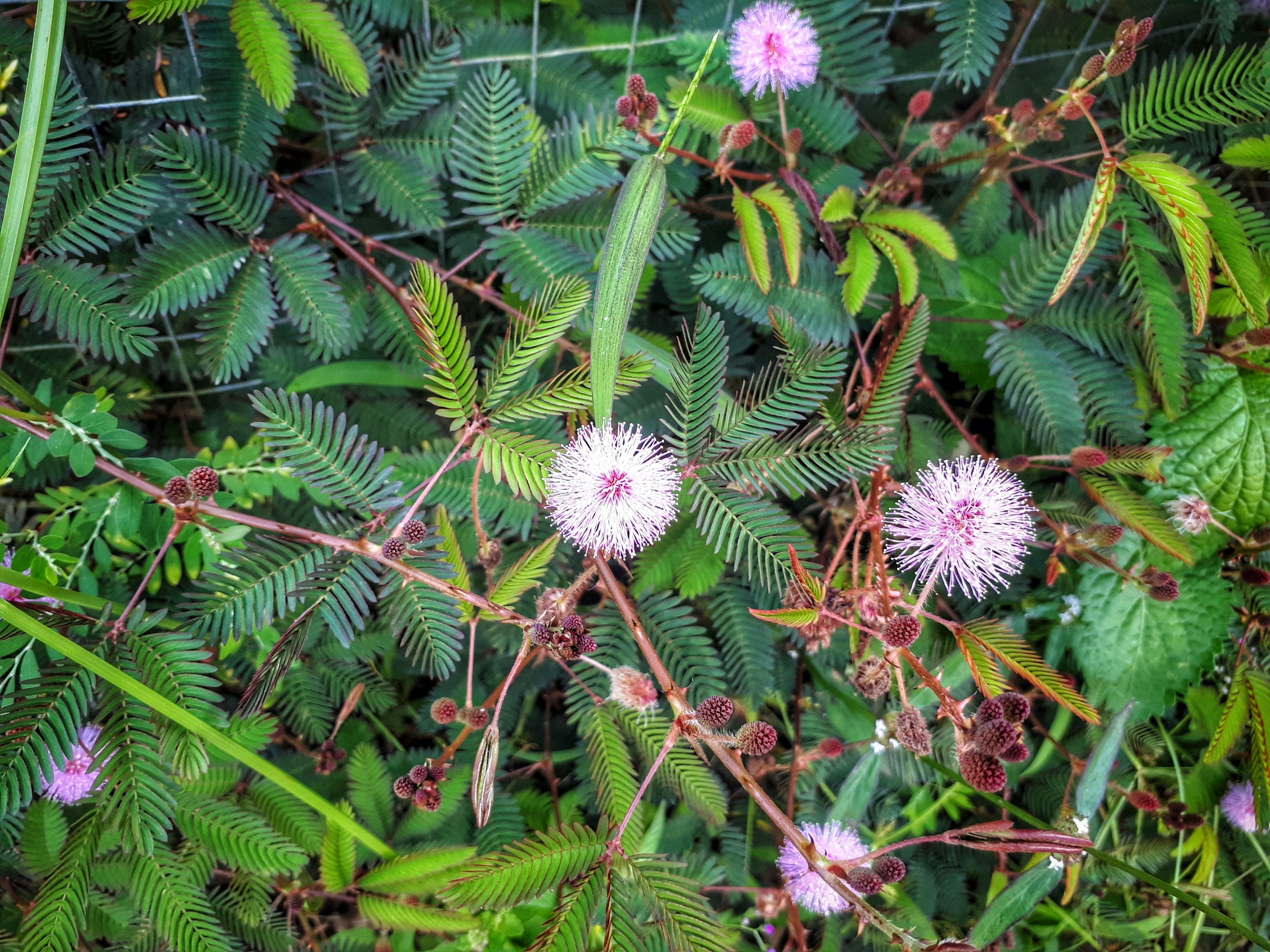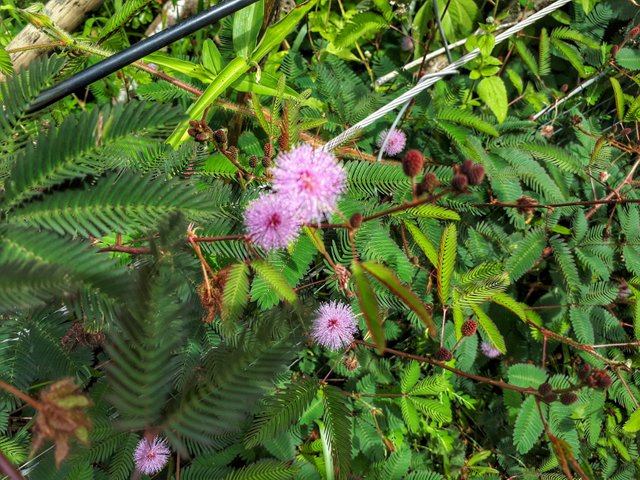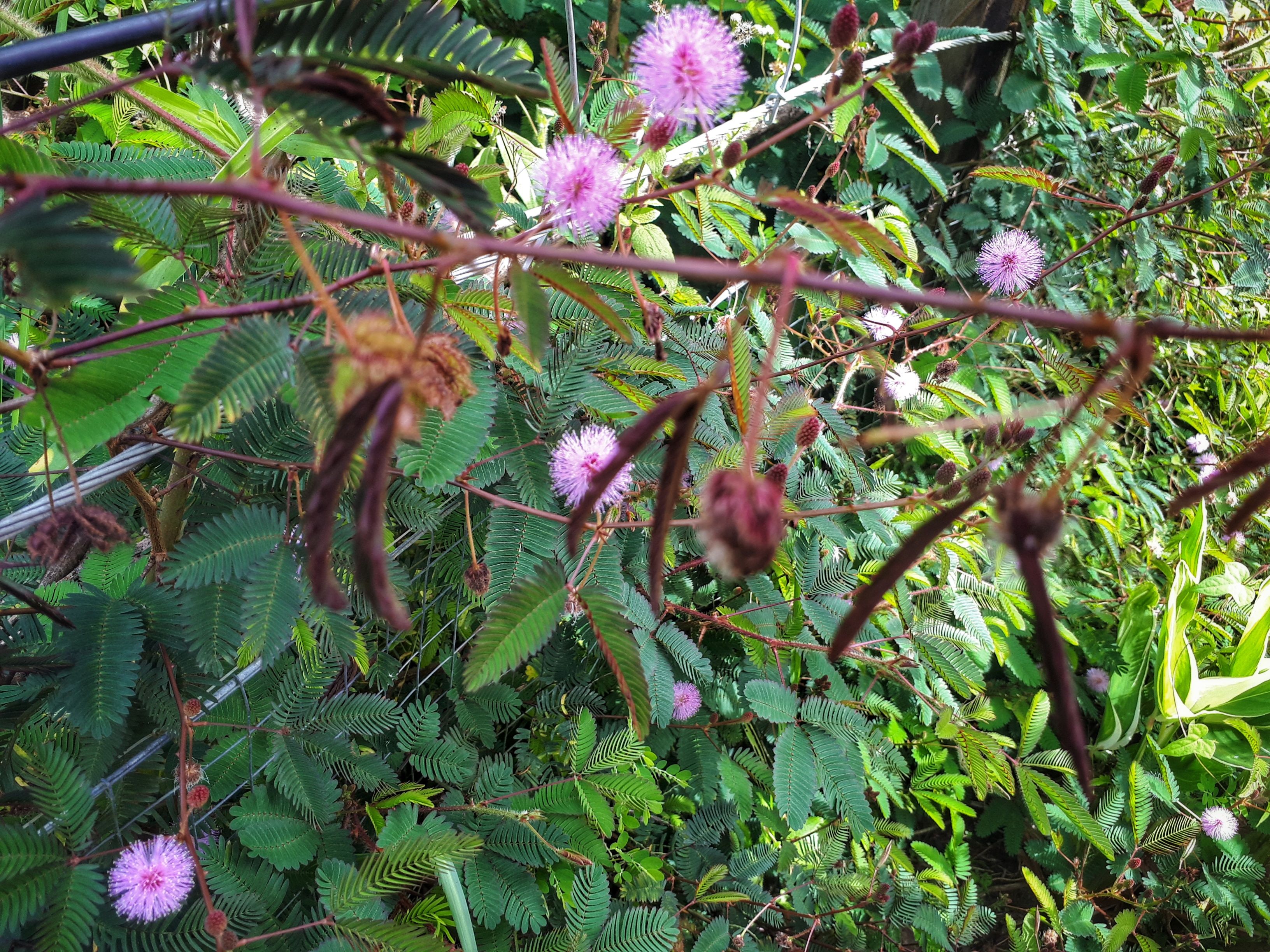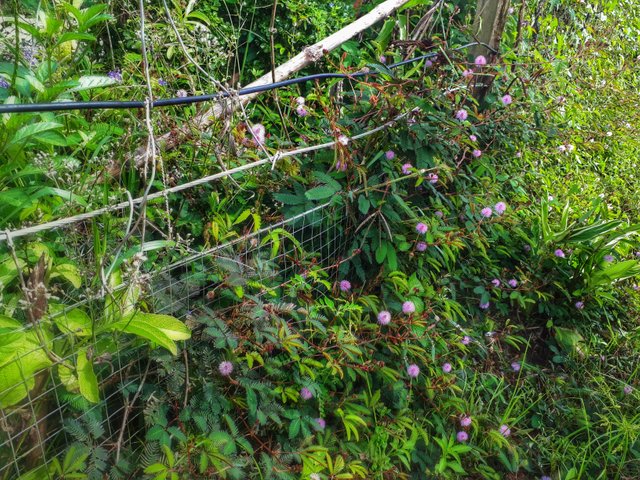MAKAHIYA (Touch-me-not) PLANT - Why do leaves close when touched?


A common sight in Philippine grasslands, the makahiya plant (Mimosa pudica) is famous for its tendency to curl up its leaves at the slightest touch, as if it were extremely embarrassed about physical contact, hence its name: "makahiya" is derived from the Filipino word for "shame" or "shyness" ("hiya").
Makahiya also known as the “sensitive plant” or the “touch-me-not” in other parts of the world.

Why is it everytime you try to hold the leaves of Mimosa Pudica or known as "touch me not" it get folded? Why it's leaves very sensitive?
When I was a kid I've had heard or learned a lot of myths about this plant. Of course since I was young, I believed all the myths about it and enjoy playing with this plant. It was really fun playing with it.
All Makahiya plant we saw, we played it with my friends. We really enjoyed seeing all of them get folded as we try to touch it. Sometimes because of excessive play, we got hurt because of its thorns, but it was okay as long as we enjoyed it.
Now I'm still curious why they're really folding. I found out that the myths and stories I read and heard weren't actually true. And I found the real answer why they are folding everytime we hold them. Here what I found:

Why do Mimosa pudica leaves close when touched?
The movement of plants caused by touch stimulus is known as Thigmotropism. In this mechanosensory response, water within the cells and other cell contents apply a certain amount of force against the cell walls of the plant; this is called turgor pressure.
It is due to turgor pressure that the leaves of this plant stay upright unless disturbed externally. Now, when you touch or shake the leaves (known as seismonastic movements), the swollen base of the leaf stalk (called the ‘pulvinus’), which contains certain contractile proteins, is activated.
The mechanism that makes mimosa pudica leaves to close.
When disturbed externally, certain regions of the plant trigger a release of various chemicals, including potassium ions, within the body of the plant. These chemicals make water and electrolytes flow/diffuse out of the cell, resulting in a loss of cell pressure. This causes the cell to collapse, which squeezes the leaves shut. Stimuli, in the form of touch, is sometimes transmitted to neighboring leaves as well.
There is no conclusive proof as to why touch-me-not plants evolved this trait, but researchers believe that it may act as a defense mechanism of sorts for them. Consider this; if you were a tiny little herbivorous insect looking for a nice supper from a plant, would you take the risk and go near a plant whose leaves twist, turn, fold and droop when you touch it, or would you rather go to a passive, peaceful meal?
Furthermore, it’s also believed that such rapid movements help the plant dislodge insects that may pose a danger to certain parts of the plant.
As enthralling as it may seem at first, touch-me-not leaves have to work extra hard to make their food after you touch, shake or otherwise disturb them in any way. Therefore, as the sensible and noble human being that you are, try not to have fun at its ‘energy expense’ the next time you stumble upon a touch-me-not plant.
It might be a fascinating process to watch, but just because you can doesn’t mean you should!
Info Source: https://www.scienceabc.com/nature/how-mimosa-pudica-plant-leaves-work-sleep-touch-shake-turgor-pressure.html
Yes I personaly learned that it is wrong playing plants like this just for enjoyment.
It may be nothing for some or just a simple worthless plant, but the truth is that it is really beneficial for us. Here's what i found also:
Benefits and How to Use:
- The root is aphrodisiac and administered as a diuretic and used against dysentery and dysmenorrhea. However, it is emetic and poisonous in large doses.
- An infusion of the leaves is given for dysentery, and as a bitter tonic.
- The seeds are used for sore throat and hoarseness
- The entire plant in decoction is considered as an alterant and antiasthmatic.
- The leaves rubbed into a paste are applied to hydrocele , and also applied to glandular swellings.
- 1/10 decoction is given to gravel and similar urinary complaints. Useful in diseases arising from corrupt blood and bile
- The juice of the leaves is used to impregnate cotton wool for dressing in any form of sinus difficulty.
- The leaves and root in the powdered state are given with milk in cases of piles and fistula.
- The leaves are employed as a bath for pains of the hips and kidney.
- The juice is applied externally to fistulous sores.
Recommended also for dysentery and diarrhea.
More info here: http://www.wildturmeric.net/2015/08/mimosa-pudica-medicinal-uses-health-benefits.html?m=1
I hope you can also learn something about this research.
Thank you for patiently reading.


Thanks for information =)
Thank you @marijo-rm
Very informative . Thanks for sharing @zhayie03 😊
Uy cha Welcome back! 😂
Thank you. 😘😘
very interesting!
Thank you so much Sir @bojakcates 😊
Waaah! I'm thinking of posting this!!! Hahaha! 😂😂
Lol sorry ate ging una-unahan lang yan. Nyahaha. Labyu. 😘😘
thanks for sharing!
My pleasure @aitkchoud 😊
Very informative post Thanks
Thank you @umairsha 😊
Dont be shy makahiya. 😂
Nice post.
Brings back a lot of childhood memories! I used to play on this plants before and is very enthralled on why it opens and closes 🤣
Haha yeah enjoying playing it when i was a kid too. 😄 Thanks @cestlabby 🤗
Very nice and informative article @zhayie03. I will resteem.
Aww thank you so much @floridagypsy I appriciate it a lot ! 😊😊